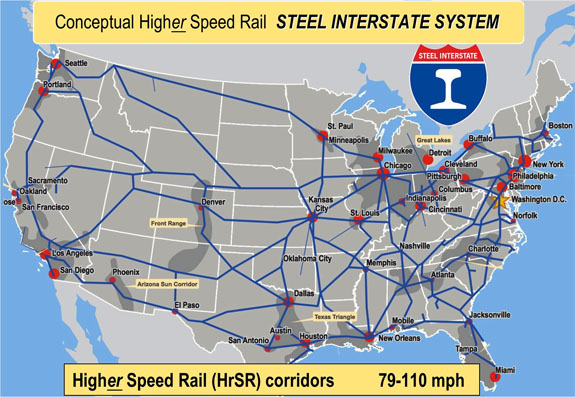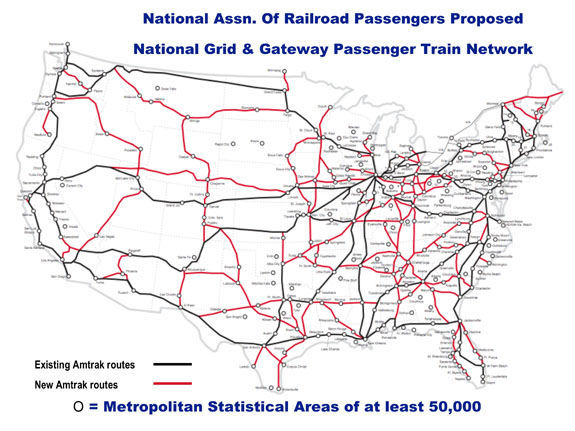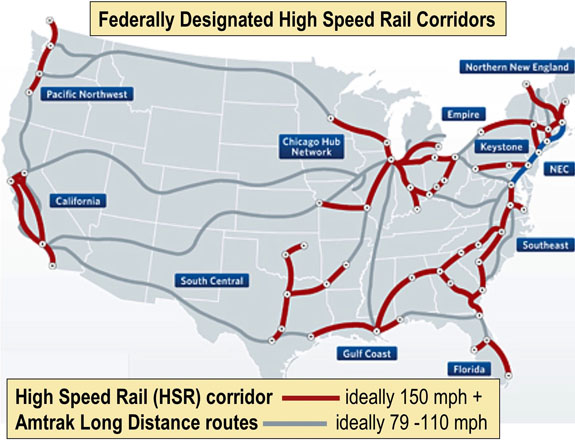-
Core network means that there will be a backbone of SIS-caliber railroad main lines, just as there is today a backbone road network called the Interstate Highway System. In both cases, the core network of main routes supports and feeds traffic to and from a larger network of secondary routes. The Steel Interstate System would consist of between 38,000 and 45,000 route-miles and be largely congruent with the Department of Defense's Strategic Rail Corridor Network (STRACNET) and mostly overlap with today's densest corridors. In addition, the National Association of Railroad Passengers (NARP) Grid and Gateway vision would largely overlap with (and into) the SIS network. Here is what it might look like:

Below is a somewhat different rendition that takes into account some of Amtrak's passenger routes:

In June 2007, the National Association of Railroad Passengers (NARP) launched its Grid and Gateway vision for passenger rail development over the next 40 years. [Ref] While NARP's plan envisions an upgraded 45,000-mile network for intercity passenger trains, most of the routes match those on DOD's STRACNET system.
Much of the American Recovery and Reinvestment Act (ARRA) rail grants are being directed at these same corridors to bring their eventual top speed up to 110 MPH, which is defined as "Emerging High Speed Rail".
Routes used by Amtrak would be upgraded as portions of the higher speed rail (HrSR) Steel Interstate System and would feed the Federal Railroad Administration's designated High Speed Rail (HSR) Corridors.
But remember, the SIS is primarily designed to serve the nation's freight transportation needs.

Learn more about:
How the concept addresses FREIGHT and PASSENGER services.
